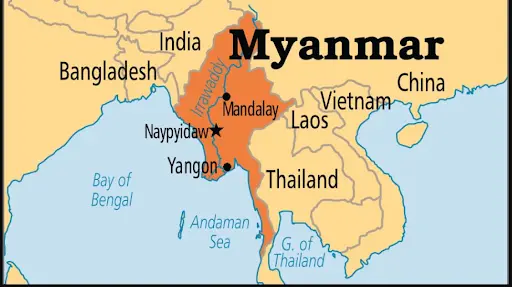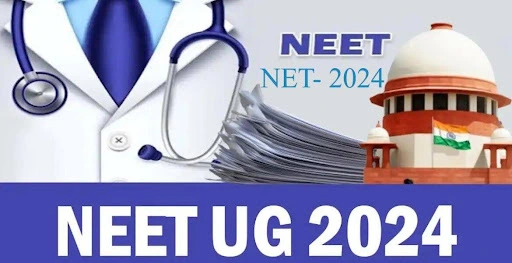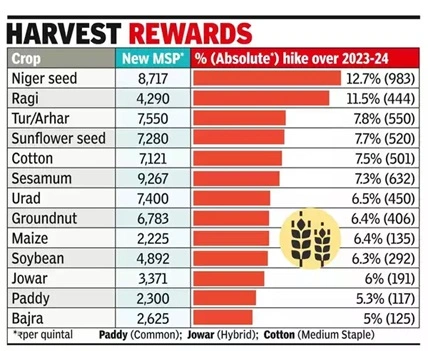Tuesday, 25th June 2024
Create the space for governance with a green heart
Why in the news?
- As a new term begins for the government and the Lok Sabha, prioritising environmental concerns must be paramount.
- Historically, no government has given genuine priority to environmental issues, with the last one focusing on development at the expense of environmental harm.
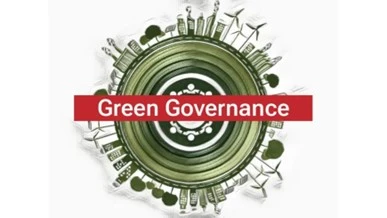
|
Present Himalayan states: ● The Indian Himalayan Region (IHR) encompasses the portion of the Himalayas located within India, extending across thirteen Indian States and Union Territories, including Ladakh, Jammu and Kashmir, Himachal Pradesh, Uttarakhand, Sikkim, West Bengal, Manipur, Meghalaya, Mizoram, Nagaland, Tripura, Assam, and Arunachal Pradesh. |
Need for Green Policies:
- India faces severe environmental degradation that can only be halted by adopting green policies.
- Green policies are crucial even as India strives to become a middle-income economy.
- Urgent areas for addressing environmental concerns include:
- Policy reforms and stringent regulations
- Sustainable development practices
- Conservation of natural resources
- Reduction of industrial pollution
- Promotion of renewable energy sources
- Protection of biodiversity and ecosystems
Problems Associated with Lack of Political Will on Environmental Governance:
- Neglect of Climate Change Mitigation and Adaptation: Inadequate actions to reduce carbon emissions and build climate resilience. Failure to address remediation aspects such as food security and disaster preparedness.
- Degradation of Forest Cover:India has one of the lowest green cover per capita globally, with only 28 trees per person, compared to Canada's 10,163 and China's 130. Recent legislation weakening forest protections, exacerbating environmental damage.
- Deteriorating Urban Environments: Major cities like Delhi, Mumbai, and those in the Gangetic belt suffer extreme air pollution, impacting health and lifespan. Inadequate sewage treatment infrastructure leading to pollution of rivers and water bodies.
- Environmental Degradation in the Himalayas: Climate change-induced glacier recession is rapid glacial melting 80% volume loss and altered weather patterns threatening water and food security. Government inaction on local environmental concerns underscores a policy-grassroots disconnect.
- Ineffective Environmental Impact Assessments (EIA): EIAs reduced to formalities, failing to prevent environmentally harmful projects. Dilution of EIA regulations and lack of meaningful stakeholder engagement compromising environmental protection efforts.
Restoration Strategies:
- Enhanced Environmental Impact Assessments (EIA): Strengthen EIA mechanisms, elevate them to statutory status, and ensure thoroughness and transparency to prevent projects from causing environmental harm.
- Restoration Projects: Initiate large-scale conservation and restoration projects focused on glaciers, forests, and rivers in the Himalayan region to mitigate climate change impacts and restore biodiversity.
- Community Involvement: Actively involve local communities and stakeholders in decision-making processes to integrate their concerns and knowledge into environmental policies and projects.
- Strict Enforcement of Environmental Laws: Improve enforcement of existing environmental regulations and increase penalties for violations to deter harmful activities and ensure compliance.
- Sustainable Development Policies: Develop and implement policies that promote sustainable development, balancing economic growth with environmental conservation to ensure long-term ecological health and resilience.
- Revised Legislation: Reassess and amend legislation such as the Forest (Conservation) Amendment Bill, 2023, to strengthen protections for natural habitats and prevent environmental degradation.
- Resilience Building: Invest in infrastructure and programs aimed at enhancing resilience against climate change impacts, including improved water management systems and disaster preparedness plans.
Government steps taken:
- The National Mission for Sustaining the Himalayan Ecosystem (NMSHE), launched under India's National Action Plan on Climate Change, aims to comprehensively address vulnerabilities in the Himalayan ecosystem.
- It has developed a unified framework for climate vulnerability assessment across 12 Himalayan states.
- Additionally, the government established the G.B. Pant Institute of Himalayan Environment & Development to focus on sustainable development and environmental conservation in the Indian Himalayan Region.
Conclusion
To achieve Sustainable Development Goal 13 (Climate Action), India must prioritise enhancing environmental governance, bolstering climate resilience efforts, and enforcing robust conservation policies. This approach is crucial to safeguarding the Indian Himalayan Region and its ecosystems for current and future generations.
|
UPSC Civil Services Examination, Previous Year Question (PYQ) Mains Q:1 Climate change is a global problem. How will India be affected by climate change? How Himalayan and coastal states of India are affected by climate change? (2017) |
Source: TH
China balancing with Beijing and Delhi
Why in the news ?
- Recently, Male facing increasing domestic and foreign policy challenges, the President of the Maldives Mohamed Muizzu is possibly aiming at a reconciliation with India.
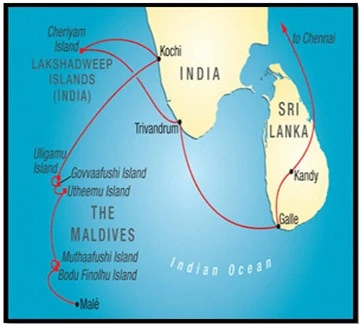
What are the economic Difficulties in Maldives ?
- Debt Burden: Maldives faces severe economic strain with a debt-to-GDP ratio of 110%. Significant debt servicing obligations include around $512 million annually in 2024 and 2025.
- Foreign Reserves: Foreign reserves are critically low at $622 million. These reserves are insufficient to cover debt maturities and sustain imports amid rising inflation.
- Dependence on Imports: Heavy reliance on imports for essential goods exacerbates economic vulnerabilities, particularly amidst food and fuel inflation.
- Revenue Generation: The government struggles with low domestic revenue generation capacity. This further complicates fiscal management and debt sustainability.
- Diversification Efforts: Efforts to diversify economic partnerships beyond traditional allies like India and China. This strategy aims to mitigate economic dependencies and attract diverse investments.
What are the Implications of India-China Ties ?
- Geopolitical Competition:
- Engagements by India and China in countries like the Maldives signify broader competition for influence in the Indian Ocean region.
- Both countries strategically invest in infrastructure and security partnerships to enhance their regional presence.
- Economic Leverage:
- China's significant investments in the Maldives, especially under the Belt and Road Initiative (BRI), offer economic leverage but raise concerns about debt sustainability and strategic dependencies.
- Strategic Alignment:
- India emphasises developmental assistance and strategic partnerships focusing on security and governance.
- China's engagements prioritise infrastructure development and economic cooperation, highlighting differing strategic priorities.
- Regional Stability:
- Both India and China are crucial for ensuring stability and security in the Indian Ocean region.
- Their approaches influence regional dynamics and shape perceptions among neighbouring countries regarding economic partnerships and security alignments.
Where does India's Stand ?
- Balanced Approach: India remains engaged with the Maldives despite geopolitical shifts, emphasising constructive diplomacy, economic support, and mutual respect.
- Long-term Engagement: Inviting President Muizzu to Prime Minister Modi’s swearing-in ceremony signals India’s commitment to long-term bilateral relations and stability in the Indian Ocean region.
- Strategic Importance: The Maldives is seen as crucial for India's maritime security and regional stability, motivating continued diplomatic efforts and economic assistance.
Maldives' Significance for India:
- Strategic Location: South of India, Maldives is vital for monitoring maritime traffic and enhancing regional security in the Indian Ocean and acting as a gateway to the Arabian Sea and beyond.
- Cultural Link: Centuries-old cultural ties with India, including historical connections to Buddhism until the 12th century. There is an inscription of Vajrayana Buddhism.
- Regional Stability: A stable Maldives supports India's "Neighbourhood First" policy, promoting peace in the Indian Ocean.
India's Significance for Maldives:
- Essential Supplies: India supplies daily essentials including rice, spices, fruits, vegetables, and medicines and aids in infrastructure development by providing materials like cement and rock boulders.
- Education: Indian institutions provide primary education and scholarships to Maldivian students.
- Disaster Assistance: India offers consistent aid during crises, including natural disasters and the Covid-19 pandemic.
- Security Provider: India provides security assistance and has intervened during critical events like the 1988 coup attempt. Joint Exercises include- “Ekuverin”, “Dosti” and “Ekatha”.
- Tourism Dominance: Indian tourists constitute a significant share of Maldives' tourism, accounting for 11.2% of arrivals in 2023.
Conclusion:
Thus, India should enhance economic assistance to the Maldives via grants, concessional loans, and capacity-building initiatives to improve fiscal management and revenue generation. Projects should prioritise infrastructure resilience, sustainable development, and economic diversification beyond traditional sectors.
|
UPSC Civil Services Examination, Previous Year Question (PYQ) Mains Q:1 Discuss the political developments in Maldives in the last two years. Should they be of any cause of concern to India? (2013) |
Source: TH
The Resolve Tibet Act
Why in the news?
- Recently, the United States Congress passed the Resolve Tibet Act, aiming to counter Chinese disinformation and promote dialogue for the resolution of the Tibet-China dispute.
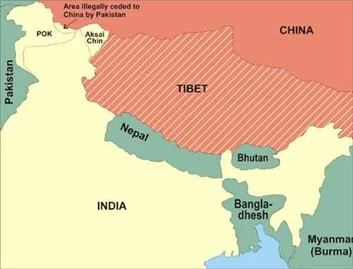 Resolve Tibet Act:
Resolve Tibet Act:
- The Resolve Tibet Act is the third major piece of U.S. legislation on Tibet, succeeding the Tibetan Policy Act (TPA) of 2002 and the Tibetan Policy and Support Act (TPSA) of 2020.
- Unlike its predecessors, the Resolve Tibet Act explicitly challenges China’s historical claims over Tibet and emphasises Tibetan self-determination and human rights.
Key Provisions:
- Countering Disinformation: The Act authorises the use of funds to counter Chinese disinformation about Tibet’s history, people, and institutions, including the Dalai Lama.
- Promotion of Dialogue: It urges China to engage in direct, meaningful dialogue with the Dalai Lama or his representatives and elected Tibetan leaders without preconditions, aiming for a settlement.
- Human Rights and Self-Determination: The Act underscores Tibetans’ right to self-determination and human rights and China’s obligations under international covenants.
- For example: International Covenant on Civil and Political Rights and the International Covenant on Economic, Social and Cultural Rights.
- Cultural Preservation: It seeks to recognise and address Tibetans’ unique socio-cultural identity, including their historical, cultural, religious, and linguistic distinctiveness.
- Geographical Definition: The Act amends the TPA to define the geographical areas comprising the Tibetan Autonomous Region clearly.
Differences from Previous Legislation:
- Tibetan Policy Act (TPA) of 2002: The TPA was cautious, recognising China’s claim over Tibet and encouraging dialogue without challenging China’s territorial assertions.
- It maintained that the Dalai Lama sought greater autonomy rather than independence.
- Tibetan Policy and Support Act (TPSA) of 2020: The TPSA pushed for dialogue without preconditions, emphasised Tibetan self-determination and encouraged international support for negotiations.
- Resolve Tibet Act of 2024: Unlike the TPA and TPSA, this Act directly challenges China’s historical claims over Tibet, promoting unconditioned dialogue.
Implications for India:
- Geopolitical Dynamics: The Act could influence India’s diplomatic relations with both China and the United States, necessitating a strategic balancing act.
- Support for Tibetan Refugees: India has a significant Tibetan refugee population, and the Act could affect international support and resources for these communities.
- Strategic Interests: India’s border security and regional stability could be impacted by the changing geopolitical landscape driven by this legislative measure.
Source: IE
GST Council
Why in the news ?
- Recently, The 53rd meeting of the Goods and Services Tax (GST) Council was held in Delhi, chaired by Nirmala Sitharaman, Union Minister for Finance and Corporate Affairs, on Saturday, June 22nd.
 About the GST Council:
About the GST Council:
- The GST Council is a constitutional body established under Article 279A of the amended Constitution of India.
- It serves as a joint forum chaired by the Union Finance Minister and includes the Union Minister of State for Finance, along with representatives from each state and Union Territory with legislatures.
- The Council's main responsibility is to make recommendations on matters concerning the Goods and Services Tax (GST), such as tax rates, exemptions, and the framework of GST laws.
Powers and Functions of the GST Council:
- Recommendations on GST Issues: The GST Council advises both the Union and State Governments on matters pertaining to the goods and services tax.
- Tax Rates: It determines the rates of GST applicable to goods and services, including any adjustments or exemptions.
- Dispute Resolution: The Council resolves disputes that may arise between the Union and States or among States concerning GST.
- Administrative Changes: It can propose administrative adjustments to enhance the efficiency of GST implementation.
- Review and Revision: Periodically, the Council reviews and revises GST rates and provisions to align with economic realities and policy objectives.
Evolution of the GST Council since its inception:
- Formation and Initial Years: Established in 2016 after the passage of the 122nd Constitutional Amendment Act, the GST Council commenced operations in 2017 with the nationwide implementation of GST.
- Operational Efficiency: Over time, the Council has evolved to enhance operational efficiency, employing real-time discussions and consensus-building among members.
- Expansion of Scope: Initially focused on setting basic tax rates and exemptions, the Council's role expanded to encompass amendments to GST laws and procedural changes.
- Judicial Scrutiny: In 2022, the Supreme Court clarified that the Council's recommendations are collaborative and not binding, highlighting its consultative nature between the Union and States.
- Adaptation to Challenges: The Council has adapted to economic fluctuations, addressed pandemic-related challenges (e.g., postponement of GST filing deadlines during COVID-19), and responded to evolving sectoral needs.
- Interstate Dynamics: Structured with states collectively holding a two-thirds voting share, the Council underscores its federal and cooperative nature in decision-making processes.
Issues associated with GST Council:
- Multiple Tax Rates: India has multiple tax rates under GST, unlike many other economies with a single indirect tax rate. This complicates the tax regime for goods and services across the country.
- New Cesses: Despite scraping multiple taxes and cesses, GST introduced a compensation cess initially for luxury and sin goods, later expanded to include automobiles. This has added complexity and additional levies.
- Trust Deficit: The Union government's appropriation of cess revenues without sharing them with states has created a trust deficit. Guaranteed compensation to states was seen as necessary due to GST not meeting its economic promises.
- Economy Outside GST Purview: Nearly half of the economy, including sectors like petroleum, real estate, and electricity duties, remains outside the GST framework. This limits the tax base and integration of these sectors into the GST system.
- Complexity of Tax Filings: GST legislation mandates complex annual returns and audits for specified taxpayers, which are challenging and confusing. Detailed information required in annual filings contrasts with simplified monthly or quarterly filings.
- Higher Tax Rates: Despite rationalisation efforts, around 50% of items are still taxed at 18% or higher under GST. Essential items like oxygen concentrators and vaccines faced higher taxes during the pandemic, affecting relief efforts.
Conclusion:
Since its inception in 2017, the GST Council has played a pivotal role in advising on GST matters, setting tax rates, resolving disputes, and adapting to economic shifts. With its federal structure and collaborative approach, the Council ensures efficient tax administration in India through consensus-driven decision-making.
|
UPSC Civil Services Examination, Previous Year Question (PYQ) Mains Q:1 Enumerate the indirect taxes which have been subsumed in the Goods and Services Tax (GST) in India. Also, comment on the revenue implications of the GST introduced in India since July 2017. (2019) |
Plutonium Isotope Fission
Why in the news ?
- A recent study on the Prompt Fission Neutron Spectrum (PFNS) conducted by the US is significant for informing design updates in India’s second stage of its nuclear power programme.

Prompt Fission Neutron Spectrum (PFNS):
- Definition: PFNS refers to the spectrum of neutrons emitted immediately after a Pu-240 nucleus captures a neutron, occurring before the nucleus reaches a stable state.
- Previous Studies: To date, only one study has investigated PFNS for Pu-240-induced fission at 0.85 mega-electron-volt (MeV). Recently, researchers in the U.S. conducted a second study using neutrons with higher energy than 0.85 MeV.
- New Findings: The latest research reveals significant differences between predicted and measured PFNS. These findings are crucial for aiding reactor designers and nuclear medicine practitioners in enhancing their applications.
- India's Progress in Nuclear Energy: On March 4, India entered the second stage of its nuclear power programme by starting the core-loading process of the Prototype Fast Breeder Reactor (PFBR) at the Madras Atomic Power Station in Kalpakkam.
India’s 3-stage Nuclear Power Program:
|
Description |
Timeline |
Timelines |
|
First Stage |
Relies on pressurised heavy water reactors (PHWRs) using natural uranium as fuel. |
Initiated in the 1950s; Operational since the 1960s |
|
Second Stage |
Focuses on developing fast breeder reactors (FBRs) using plutonium-239. |
Initiated in the 1970s; Development phase |
|
Third Stage |
Involves the development of thorium-based reactors utilizing India’s significant thorium reserves. |
Initiated in the late 1980s/early 1990s; Research & Development phase |
About Plutonium-240 and its Fission:
- Neutron Capture: When a Pu-239 nucleus captures a neutron, it can either undergo fission or become Pu-240. Pu-240 is prevalent in nuclear reactors and nuclear weapon test fallout.
- Pu-240 Behaviour: Pu-240 capturing a neutron typically turns into Pu-241. If Pu-240 undergoes fission, there’s uncertainty about the energy of its fission products. Current models use complex calculations to estimate this output.
Note:
Plutonium and Its Creation:
- Origin: Plutonium is created from Uranium-238 in nuclear reactors.
- Plutonium-239: Pu-239 is a weapon-grade fissile material used to make nuclear weapons.
- By-products: Both Pu-239 and Pu-240 are by-products of nuclear reactor operations and nuclear bomb explosions.
 Relevance of PFNS Study to India’s PFBR:
Relevance of PFNS Study to India’s PFBR:
- PFBR Use: The Prototype Fast Breeder Reactor (PFBR) in India utilises plutonium derived from the spent fuel of CANDU (Canada Deuterium Uranium) reactors, which includes Pu-240. Reprocessed spent fuel from the PFBR will also contain Pu-240.
- Importance of New Data: Updated data on the behaviour of Pu-240 is crucial for enhancing reactor efficiency and safety.
Production and Characteristics of Pu-240:
- Creation of Pu-239: Pu-239 is formed when U-238 absorbs neutrons in a reactor. As Pu-239 captures additional neutrons, it transforms into Pu-240, accumulating over time.
- Spontaneous Fission: Pu-240 undergoes spontaneous fission, emitting alpha particles, and is considered an impurity in weapons-grade plutonium, where its concentration is maintained below 7%.
- Reactor-Grade Plutonium: Plutonium containing more than 19% Pu-240 is classified as reactor-grade.
Experimental Findings on PFNS
Research at LANSCE: At Los Alamos Neutron Science Centre (LANSCE), researchers bombarded a pure Pu-240 sample with neutrons ranging from 0.01 to 800 MeV.
Detection Setup: Liquid scintillators were used to detect emitted particles, with a small Pu-240 sample employed to reduce alpha particle emission.
Measurement Focus: The study measured the energies of neutrons and other fission products, concentrating on neutron-induced fission data.
|
UPSC Civil Services Examination, Previous Year Question (PYQ) Prelims Q:1 India is an important member of the ‘International Thermonuclear Experimental Reactor’. If this experiment succeeds, what is the immediate advantage for India?(2016) (a) It can use thorium in place of uranium for power generation (b) It can attain a global role in satellite navigation (c) It can drastically improve the efficiency of its fission reactors in power generation (d) It can build fusion reactors for power generation Ans: (D) Q:2 The function of heavy water in a nuclear reactor is to: (2011) (a) Slow down the speed of neutrons (b) Increase the speed of neutrons (c) Cool down the reactor (d) Stop the nuclear reaction Ans: (A) |
Source: TH
Finance Commission and Indian cities
Why in the news ?
- Recently, the 18th Lok Sabha and Union government established this govt. focused on the 16th Finance Commission in spearheading significant public finance reforms for India's urban areas.

|
Note: ● The Sixteenth Finance Commission has been requested to make its recommendations available by October 31, 2025, covering an award period of 5 years commencing 1st April, 2026. |
The 16th Finance Commission lookout Five recommendations:
- Substantial Increase in Funds to Cities:
- The 15th Finance Commission (FC) has allocated Rs 1.55 lakh crore over five years (FY21-22 to FY25-26), marking a 78 percent increase over the grants given during the 14th FC period.
- The 14th FC allocated 4.31 percent of the divisible pool (Rs 2,87,436 crore) to local governments, with 30 percent (Rs 87,000 crore) earmarked for municipalities.
- In contrast, the 15th FC allocated 4.15 percent of the divisible pool (Rs 4,36,361 crore) to local governments, slightly reducing the share for municipalities to 35 percent in its final report.
- Mainstreaming Metropolitan Governance:
- The 15th FC introduced 100 percent outcome funding of Rs 38,000 crore for urban agglomerations (UAs) with populations over 50 million, totaling 150 million people.
- This funding is tied to performance indicators for air quality, water, and sanitation, complemented by shared municipal services.
- This marks the first major policy intervention since the 74th Constitutional Amendment Act (CAA) of 1992 to integrate metropolitan governance effectively.
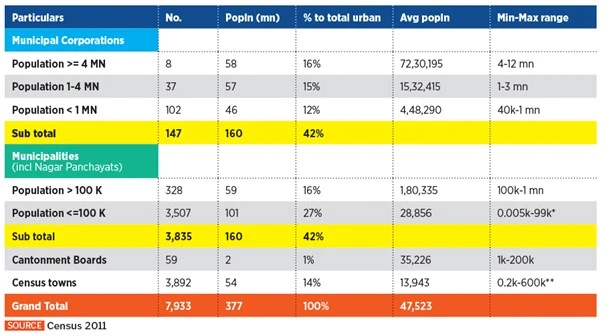

- Two Game-Changing Entry Conditions:
- The 15th FC introduced two critical entry conditions for accessing grants: the mandatory publication of audited annual accounts and the notification of minimum floor rates for property tax by every municipality.
- These reforms aim to enhance financial governance and transparency across municipalities, leveraging property tax as a significant revenue source.
- These reforms represent a significant push towards financial governance, supported by the Ministry of Housing and Urban Affairs' initiative with the www.cityfinance.in portal.
- Deadline for Strengthening State Finance Commissions:
- The 15th FC set a deadline of March 2024 for states to strengthen their State Finance Commissions (SFCs) and present action taken reports in state legislatures.
- SFCs are essential for formula-based fiscal transfers to panchayats and municipalities, mandated under the 74th CAA.
- Progressive voices within state governments may gain strength, catalysing fiscal decentralisation despite potential challenges in compliance.
- National Platform for Municipal Finance Transparency:
- Municipalities are mandated to disclose financial data (budgets, audited accounts, contractor payments) and operational performance (e.g., garbage collection coverage, water supply adequacy) publicly.
- The Ministry of Housing and Urban Affairs initiated Service Level Benchmarks in the mid-2000s, focusing on water supply, sanitation, waste management, and stormwater drains.
- Over 1,000 municipalities in five states publish these benchmarks on www.pas.org.in, enhancing transparency.
- Enhanced transparency aids data-driven decision-making at municipal and state levels, fostering citizen engagement and accountability in democratic governance.
Need for the Reforms:
- Inadequate Funding and Resource Utilisation: Cities face significant financial shortfalls and struggle to effectively utilise allocated funds, resulting in underdeveloped infrastructure and insufficient services.
- Lack of Accountability: There is minimal transparency in how municipal funds are spent and their impact on improving citizens' lives, leading to inefficient resource allocation and unmet public needs.
- Fiscal Decentralisation: Cities require predictable fiscal transfers from state governments for effective planning, yet delays in establishing State Finance Commissions (SFCs) and implementing their recommendations hinder financial autonomy.
- Revenue Optimization: Cities often fail to leverage their revenue-generating powers due to outdated valuation processes controlled by state authorities. Overhaul of revenue collection mechanisms is essential to maximise income potential.
- Transparency and Fiscal Responsibility: Financial reporting standards vary widely across states, necessitating standardised formats, mandatory accounting norms, and robust management systems to enhance transparency and accountability in municipal governance.
Activities by State Governments:
- Timely Constitution and Implementation of State Finance Commissions (SFCs): State governments should ensure the prompt establishment of SFCs and effective implementation of their recommendations. This supports fiscal decentralisation by providing cities with predictable funding.
- Updating Valuation Processes: States need to regularly update guidance values or circle rates to reflect current market values. This enables cities to optimise revenue collection from property taxes and ensures financial sustainability.
- Enhancing Legal and Institutional Frameworks: States should establish standardised formats for financial accounting, reporting, and budgeting across municipalities. This promotes consistency, transparency, and comparability in financial practices.
- Empowering Local Governments: States should delegate adequate expenditure authority to city councils, reducing dependency on state-level approvals. This empowers local governments to make timely decisions and enhances operational efficiency.
- Mandating Transparency and Citizen Participation: States should mandate the public disclosure of municipal financial data and project details in accessible formats. Supporting participatory budgeting initiatives can enhance transparency and citizen engagement in local governance processes.
Conclusion:
Hence, the 16th Finance Commission plays a pivotal role in driving crucial municipal financial reforms through strengthening state finance commissions, promoting fiscal decentralisation, optimising revenues, enhancing fiscal responsibility, and encouraging transparency and citizen participation in governance.
|
UPSC Civil Services Examination Previous Year’s Question (PYQs) Prelims: Q:1 Consider the following: (2023)
For the horizontal tax devolution, the Fifteenth Finance Commission used how many of the above as criteria other than population area and income distance? (a) Only two (b) Only three (c) Only four (d) All five Ans: (b)
Mains Q:1 Discuss the recommendations of the 13th Finance Commission which have been a departure from the previous commissions for strengthening the local government finances. (2013) Q:2 Q How is the Finance Commission of India constituted? What do you know about the terms of reference of the recently constituted Finance Commission? Discuss. (2018) |
Source: LM
microRNAs for Detecting Breast Cancer
Why in the news?
- Recently, scientists at the CSIR-Centre for Cellular and Molecular Biology (CCMB) have discovered a potentially cost-effective and non-invasive method to detect various types of breast cancer using just a drop of blood.
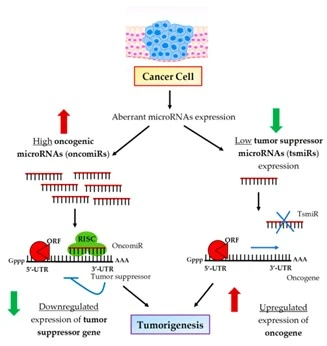 About:
About:
- microRNAs (miRNAs):
- Most cellular processes in the body are regulated by miRNAs, which are small non-coding RNA molecules consisting of 23-25 bases.
- Researchers have analysed microRNA signatures in human cancer samples and identified miRNAs associated with invasive breast cancer.
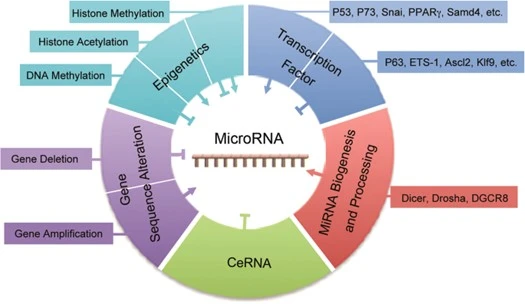
- Biomarkers:
- Researchers identified 107 miRNAs that could serve as potential biomarkers for different types, grades, and stages of invasive ductal carcinoma.
- Cancer cells shed DNA/RNA into the circulation, known as ‘Circulating Nucleic Acids (CNAs),’ which can be detected in plasma or other body fluids of cancer patients to identify early stages of cancer development.
- These identified biomarkers could form the basis of a liquid biopsy system, allowing cancer detection from just one drop of blood.
- Significance:
- This study paves the way for the application of miRNAs as biomarkers, enabling the development of a refined, cost-effective, and non-invasive method for breast cancer diagnosis.
- The discovery of biomarkers is crucial for the early detection, classification, and monitoring of cancer
Source: TH
Srinagar gets tag of World Craft City
Why in the news?
- Recently, Srinagar has garnered attention for being designated as a ‘World Craft City’ by the World Craft Council (WCC), marking it as the fourth city in India to receive this recognition.
- This follows its inclusion in the UNESCO Creative City Network (UCCN) for crafts and folk arts three years ago.
- Jaipur, Malappuram and Mysore are the other Indian cities that have previously been recognised as World Craft Cities.
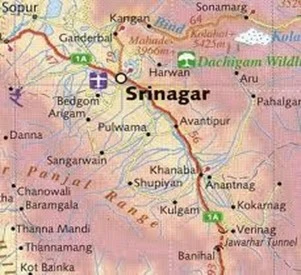 World Craft Council (WCC):
World Craft Council (WCC):
- About:
- The World Craft Council (WCC) is a non-profit organisation linked with UNESCO. It was founded in 1964 to advance the conservation, safeguarding, and growth of traditional crafts, with an emphasis on promoting economic development through crafts.
- World Craft City recognition:
- World Craft City recognition by the WCC is a prestigious title bestowed upon cities that excel in fostering the promotion and development of traditional crafts and artisanal skills.
- This acknowledgment underscores the city's commitment to preserving and promoting its distinctive craft heritage while providing crucial support to local artisans.
 Significance of World Craft City Recognition:
Significance of World Craft City Recognition:
- International Prestige: Attaining this recognition enhances the city's global stature, establishing it as a distinguished hub for craftsmanship and excellence.
- Economic Benefits: The designation stimulates the local economy by attracting tourists, investors, and buyers seeking authentic crafts, thereby expanding market opportunities for artisans.
- Cultural Preservation: It underscores the city's commitment to safeguarding traditional crafts, ensuring their continuity and transmission to future generations.
- Support for Artisans: Recognition often translates into increased support for local artisans, including financial aid, training programs, and avenues for international collaboration.
- Promotion of Innovation: The recognition fosters innovation within the craft sector by promoting the fusion of traditional methods with contemporary designs, encouraging creativity and sustainability.
- Enhanced Visibility: The city and its crafts gain heightened visibility through international media exposure, exhibitions, and events associated with the World Craft Council (WCC).
Criteria for Recognition as a World Craft City:
- Rich Craft Tradition and Skilled Artisans: The city should possess a deep-rooted tradition of crafts with a substantial population of skilled artisans.
- Promotion and Development: There should be active efforts to promote and develop craft traditions, ensuring their continuation and growth.
- Preservation of Cultural Heritage: Commitment to preserving cultural heritage through craft practices and supporting sustainable methods of production.
- Innovation and Creativity: Demonstrated evidence of innovation and creativity in craft techniques and designs, blending traditional methods with contemporary ideas.
- Community Involvement: Strong community engagement and support for the craft sector, fostering local pride and participation in preserving cultural practices.
|
UNESCO’s Creative Cities Network (UCCN) About:
Aim:
|
Note:
- Indian cities in the network: Apart from Kozhikode and Gwalior, Varanasi (music), Srinagar (crafts and folk arts) and Chennai (music) are part of the network.
Source: TH
Indian Railways and Safety Challenges
Context:
- The issue of Indian Railway safety is under scrutiny after a freight train collided with a passenger train near Siliguri, West Bengal.
- This incident, along with last year’s Balasore train accident, highlights the urgent need for comprehensive reforms and enhanced safety protocols to prevent future accidents.
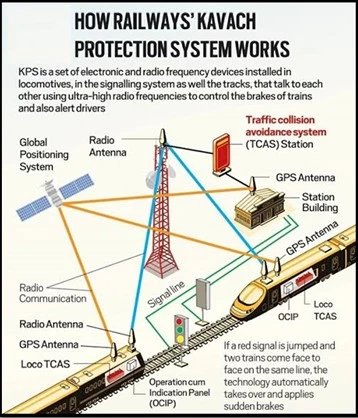 :Recent Issues in Indian Railways:
:Recent Issues in Indian Railways:
- Tragic Accident: The GFCJ container train collided with the 13174 Agartala-Sealdah Kanchanjunga Express, resulting in 11 deaths and around 40 injuries.
- Premature Conclusions: The Railway Board Chairperson prematurely blamed the container train crew and provided incorrect information about casualties.
- Slow Rollout of Kavach System: The indigenous Kavach signalling system to prevent collisions has been slowly implemented due to limited industrial capacity.
- Staffing Issues: Indian Railways is overstaffed but has critical vacancies in safety-sensitive positions, causing stress and overwork for existing staff.
- Ambiguous Protocols: Ambiguous rules for handling automatic signal failures create confusion and increase the risk of accidents.
- There has been an average of 44 consequential train accidents every year in the five-year period ending 2022-23 (FY23).
Types of Accidents:
- Derailments: The most common type, where a train goes off the tracks, caused by track defects, equipment failure, human error, or sabotage.
- Collisions: Occur when two or more trains collide on the same track, often due to signal failures or communication errors between railway personnel.
- Level Crossing Accidents: Involve collisions between trains and vehicles or pedestrians at rail crossings, underscoring the need for improved safety mechanisms at these points.
- Accident Trends in Indian Railways: Over the years, the trend in accident types has been: Derailments > Level crossing accidents > Collisions > Fire in trains > Miscellaneous accidents.
Impacts of Train Accidents:
- Casualties and Operational Disruption: Train accidents result in casualties and injuries, disrupting the railway network, causing delays, cancellations, and financial losses.
- Trust Issues: Accidents erode public trust in train safety, affecting passenger confidence and ridership.
- Economic Cost: The economic impact includes infrastructure damage, compensation payouts, and substantial investments required for safety upgrades.
- Broader Implications: Industries reliant on efficient freight transport face disruptions in supply chains and logistics due to train accidents.
Challenges Faced by Indian Railways:
- Unmanned Level Crossings: Closing unmanned level crossings remains a priority as they pose significant risks to passengers and train crews. Focused measures have improved safety, but continued vigilance is essential.
- Track Maintenance: Emphasising track maintenance has reduced accidents, but maintaining thousands of kilometres of tracks across diverse terrains is challenging. Regular inspections, timely repairs, and modern technology are crucial.
- Communication and Information Management: Effective communication during emergencies is vital. The GFCJ container train accident highlighted the need for accurate and timely information dissemination, as premature statements can cause confusion and hinder investigations.
- Overstaffing and Workload: Despite being overstaffed, Indian Railways has critical vacancies in safety-sensitive roles like loco crew and station managers. Addressing these vacancies and reducing long working hours for locomotive pilots is essential.
- Near Misses and Management Failure: Investigating near misses in the affected section can reveal management effectiveness. AI-enabled applications can enhance safety analyses and provide actionable alerts by analysing digital data.
Safety Improvements:
- Digital Data Management and AI: Utilising extensive digital data from station data loggers and locomotive microprocessors, AI can effectively manage and filter out irregularities. Implementing AI-driven predictive maintenance can help prevent accidents.
- Track Maintenance: Regular track maintenance is crucial to prevent derailments and accidents. Focused measures, like closing unmanned level crossings, have already improved safety.
- Traffic Demands vs. Safety: Balancing increasing traffic demands with safety requirements is a challenge. Ensuring timely maintenance without compromising safety is vital.
- Reducing Accidents: Urgent steps are needed to fill vacancies and reduce long working hours for locomotive pilots. Analysing accident patterns and implementing targeted safety measures can help reduce incidents.
Steps Taken To Minimise Rail Accidents:
- Safety System Implementation:
- Kavach:
- Launched in 2020, Kavach is a cab signalling train control system with anti-collision features, developed by the Research Design and Standards Organisation (RDSO) and three Indian vendors.
- Considering the installation of ETCS Level II in important sections could be pragmatic as Kavach matures.
- Adopted as the National Automatic Train Protection (ATP) System, it adheres to Safety Integrity Level-4 (SIL-4) standards.
- Kavach monitors the existing signalling system, alerts the loco pilot when approaching a 'red signal,' and applies automatic brakes if necessary to prevent overshooting.
- It also relays SoS messages during emergencies and features centralised live monitoring of train movements through the Network Monitor System.
- Priority Areas for Kavach:
- The CRS report from the Vizianagaram train accident emphasised implementing Kavach in Automatic Signalling territories prone to collisions.
- Prioritising trunk routes and Automatic Signalling territories for Kavach installation (at a rate of 4,000 to 5,000 km/year) is achievable.
- Mission Zero Accident: Announced in the Railway Budget 2016-17, this mission comprises two sub-missions:
- Elimination of Unmanned Level Crossings: All unmanned level crossings on Broad Gauge were eliminated by 2019.
- Train Collision Avoidance System (TCAS): To prevent collisions and signal passing at danger, TCAS has been installed on the Lingampalli–Vikarabad–Wadi and Vikarabad–Bidar sections (250 Route km) on South Central Railway. It is under implementation on 1199 Route Km on South Central Railway.
- Rashtriya Rail Sanraksha Kosh Fund:
- Created in 2017-18 with a corpus of 1 lakh crore over five years, this non-lapsable fund is dedicated to critical safety-related works.
- Refresher Courses for Officers:
- Over 300,000 non-gazetted officers have received refresher training to address lapses through skills enhancement. Safety category staff are also trained in Disaster Management, focusing on Relief, Rescue, and Rehabilitation (3‘R’s), Threat Perception, Emergency Response, Fighting, use of Fire Extinguishers, and First Aid.
- Fog PASS Device:
- A GPS-based handheld device aids crew during foggy weather by providing audio-visual alarms whenever any landmark comes within the geo-fence range.
- Recommendations of the CAG Report:
- Develop a strong monitoring mechanism for timely implementation of maintenance activities using fully mechanised track maintenance methods and improved technologies.
- Ensure the railway administration follows the guiding principles for the deployment of RRSK funds.
- Prepare a Detailed Outcome Framework for each item of safety work.
- Kavach:
|
Committees Recommendations:
|
Suggestions and Way Forward:
- Continued Investment: Upgrading tracks, signalling systems, and rolling stock is crucial. Modernising ageing infrastructure can significantly reduce the risk of accidents.
- Strengthening Safety Protocols: Enhance safety protocols through better training of railway staff, stricter adherence to operating procedures, and leveraging technology for real-time monitoring and response.
- Public Awareness: Increasing public awareness about railway safety, including rules at level crossings and onboard safety measures, can prevent accidents involving pedestrians and vehicles.
- Improved Coordination: Improved coordination between government agencies, railway authorities, and the public ensures accountability and timely response to safety issues.
- Encouraging Research: Promoting research into innovative safety technologies and practices tailored to Indian conditions can lead to breakthroughs in accident prevention.
- Evolving Safety Measures: As India develops, the demand for safe and reliable rail transport grows. Evolving safety measures to protect passengers and ensure the continued viability of the railway system is imperative
Conclusion:
Hence, to enhance railway safety, it is essential to strengthen and clarify protocols for handling signal failures and emergencies, ensuring staff receive clear guidelines and comprehensive training. Fast-tracking the implementation of safety technologies like the Kavach system, with annual targets of 4,000 to 5,000 km, will improve overall safety and prevent collisions.
|
UPSC Civil Services Examination, Previous Year Question (PYQ) Prelims: Q:1 Consider the following communication technologies: (2022)
Which of the above are considered Short-Range devices/technologies? (a) 1 and 2 only (b) 2 and 3 only (c) 1 and 3 only (d) 1, 2 and 3 Ans: (d) Mains: Q:1 The setting up of a Rail Tariff Authority to regulate fares will subject the cash strapped Indian Railways to demand subsidy for the obligation to operate nonprofitable routes and services. Taking into account the experience in the power sector, discuss if the proposed reform is expected to benefit the consumers, the Indian Railways or the private container operators. (2014) Q:2 Why is Public Private Partnership (PPP) required in infrastructure projects? Examine the role of PPP model in the redevelopment of Railway Stations in India. (2022) |
Share the article
Edukemy’s Current Affairs Quiz is published with multiple choice questions for UPSC exams
MCQ
Get Latest Updates on Offers, Event dates, and free Mentorship sessions.

Get in touch with our Expert Academic Counsellors 👋
FAQs
UPSC Daily Current Affairs focuses on learning current events on a daily basis. An aspirant needs to study regular and updated information about current events, news, and relevant topics that are important for UPSC aspirants. It covers national and international affairs, government policies, socio-economic issues, science and technology advancements, and more.
UPSC Daily Current Affairs provides aspirants with a concise and comprehensive overview of the latest happenings and developments across various fields. It helps aspirants stay updated with current affairs and provides them with valuable insights and analysis, which are essential for answering questions in the UPSC examinations. It enhances their knowledge, analytical skills, and ability to connect current affairs with the UPSC syllabus.
UPSC Daily Current Affairs covers a wide range of topics, including politics, economics, science and technology, environment, social issues, governance, international relations, and more. It offers news summaries, in-depth analyses, editorials, opinion pieces, and relevant study materials. It also provides practice questions and quizzes to help aspirants test their understanding of current affairs.
Edukemy's UPSC Daily Current Affairs can be accessed through:
- UPSC Daily Current Affairs can be accessed through Current Affairs tab at the top of the Main Page of Edukemy.
- Edukemy Mobile app: The Daily Current Affairs can also be access through Edukemy Mobile App.
- Social media: Follow Edukemy’s official social media accounts or pages that provide UPSC Daily Current Affairs updates, including Facebook, Twitter, or Telegram channels.

